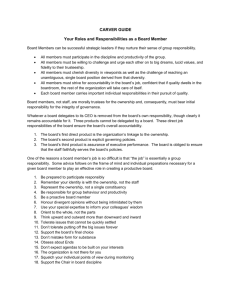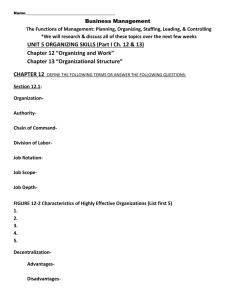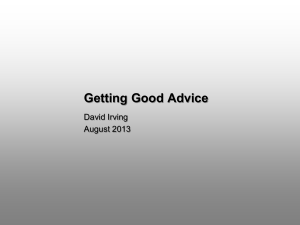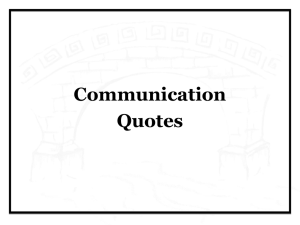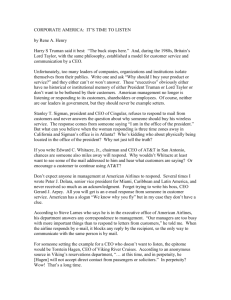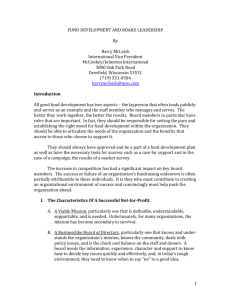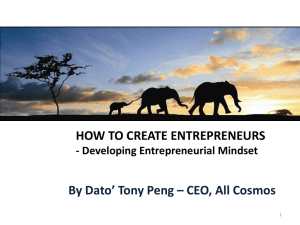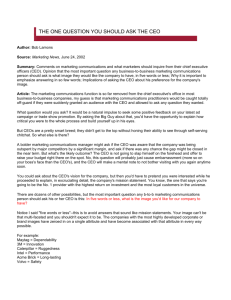Enterprise of the Future IMCI
advertisement
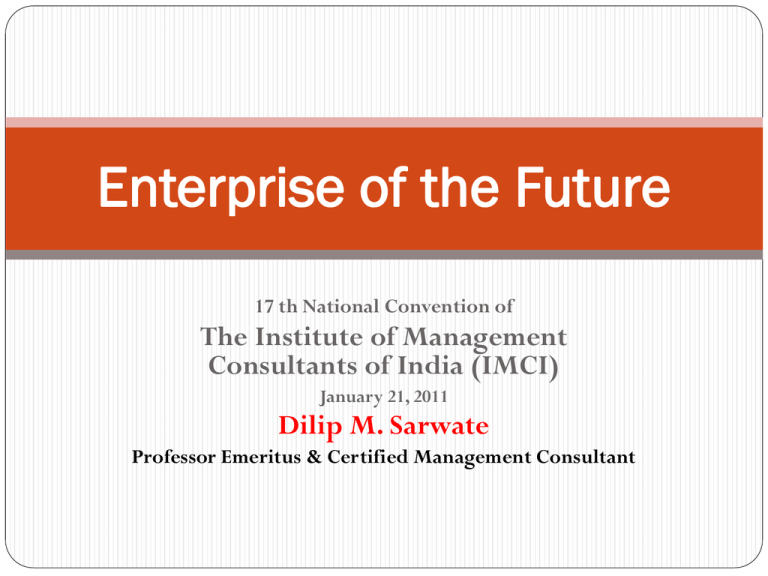
Enterprise of the Future 17 th National Convention of The Institute of Management Consultants of India (IMCI) January 21, 2011 Dilip M. Sarwate Professor Emeritus & Certified Management Consultant Are you worried about the future? Of what? •Economy •Technology •Polity •Any other? This presentation is based on a study of conversations with more than 1,000 CEO's and Public Sector Leaders worldwide. IBM Global CEO Study How research was conducted? The study was done in 40 nations around the world, 32 different industries, 19 % companies employing more than 50,000 employees and 22 % employing less than 1000 employees Research is based on surveys of 1,130 CEO s, general managers and senior public sector and business leaders from around the world. IBM leaders conducted more than 95 percent of these interviews face to face. The Economist Intelligence Unit administered the remainder by telephone. The sample breakdown was Japan (121), Asia Pacific including India (248), European Union (364), Non European Union (39), North America (290) and South America (68). Introducing the Enterprise of the Future These findings — across industries, geographies and organizations of different sizes — paint a surprisingly similar view of the traits that we can believe will be needed for future success. At its core, Enterprise of the Future is … Session I Hungry for Change CEO’s foresee significant changes ahead. But their confidence in their ability to mange the change is not nearly as high. What are the major change drivers? Who manages change better? Implications Accept change as a state of being. It will be the only constant Hire, position and reward innovators and change leaders Focus on delivering business outcomes Operate like a venture capitalist Session II Innovative beyond customer imagination Implications Find ways to make offerings relevant to new markets and increasingly prosperous consumers Understand timing and network effects Connect everyone to the customer. They are the best idea generators Use technology to anticipate shifts faster than the competition Session III Globally integrated Implications Integrate capabilities globally to differentiate Build carefully calibrated global business design through Mergers & Acquisitions Find and eliminate integration barriers Groom global leaders Recognize the importance of social connection within and across organizations Session IV Disruptive by nature Implications Think like an outsider Draw breakthrough ideas from other industries Empower entrepreneurs (Create Intrapreneurs) Experiment creativity in the market, not just in the laboratory Manage today’s business while experimenting with tomorrow’s model Types of Business Models Enterprise model: Specializing and reconfiguring the business to deliver greater value by rethinking what is done in-house and through collaboration Revenue model: Changing how revenue is generated through new value propositions and new pricing models Industry model: Redefining an existing industry, moving into a new industry, or creating an entirely new one Session V Genuine, not generous Implications Understand Corporate Social Responsibility (CSR) expectations Inform but do not overwhelm Start with green Involve NGO’s as part of the solution Make work part of making the world a better place Executive Summary Organizations are bombarded by change, and many are struggling to keep up. CEO s view more demanding customers not as a threat, but as an opportunity to differentiate. Nearly all CEO s are adapting their business models, twothirds are implementing extensive innovations. CEO s are moving aggressively toward global business designs, deeply changing capabilities and partnering more extensively. Financial outperformers are making bolder plays. There is one more attribute evident in CEO’s responses despite the challenges and issues it faces. The Enterprise of the Future is fundamentally optimistic What do we learn from this study? Rapid changes are observed in business, technology and global markets Need to reinvent the products & services to globally integrate and change the way we work with our clients, approach to R & D, workplace practices and way to run a company Boldest plays pursuing the most global collaborative and disruptive business models innovation are outperforming peers. Statistical and financial analysis will provide a unique perspective on the future of enterprise. Proof of any leader’s decisions is in their outcomes Is something missing? Yes The Competition! The Competitive Environment Competition will emerge from… Similar or substitute products/ services From organized as well as unorganized sectors From low cost economies like BRIC (Brazil, Russia, China & India) and many other emerging economies like South Korea, Taiwan, Malaysia, Thailand and many others It will necessitate investing in Competitive Intelligence What is Competitive Intelligence? Competitor Intelligence: This will call for compiling data on who is your competitor, what are his strengths & weaknesses, how does he react to your strategies and so on. This is called Competitive Reconnaissance Competitive Intelligence: This will include all factors in the world and changes thereof which can affect your competitiveness. Few examples include Kargil, 9/11 and 26/11. CI is futuristic, proactive and decision support system (DSS) One more thing that will be crucial. That is developing a Global Strategy. Remember Strategy is King Developing a Global Strategy Researching the markets Defining the target markets Evaluating the competition Competitive positioning Strategic alliances Brand building Manufacturing efficiency Faster innovations Efficient logistics Ultimately, what will matter is your Competitive Advantage A passive company will soon face Extinction An adaptive company will manage to Survive It is only a creative company which can hope for Phenomenal Growth. This is going to be the Mantra for building your Enterprise of the Future Use, re-use and keep on refining Success will be yours Thank you & Best of Luck

